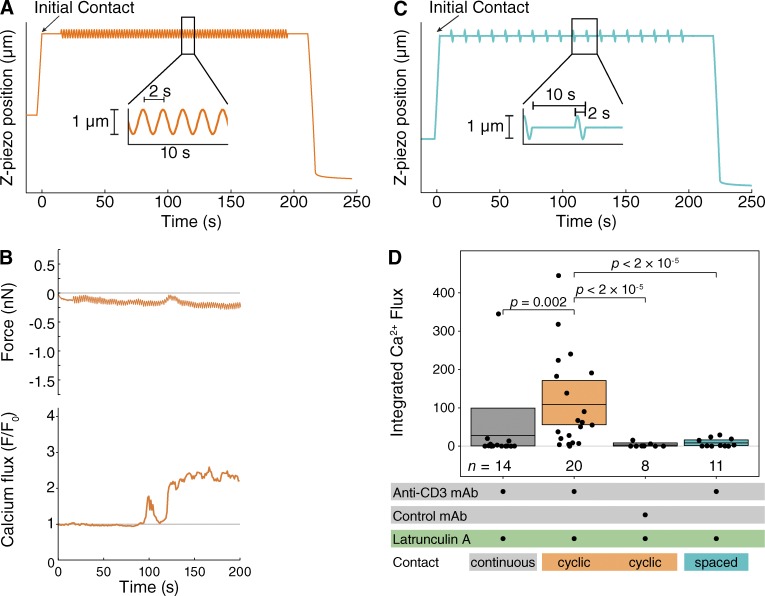Figure 4.
Application of cyclical force rescues Ca2+ flux in LatA-treated cells. (A) Z-position of cantilever during application of cyclical force. The ramp-up indicates lowering of the cantilever until the contact. The cantilever is held in place for 15 s and then begins a sinusoidal movement with amplitude 0.5 µm and period 2 s. After 180 s, the tip is again held constant for 15 s, then retracted. (B) Time courses for force on the cantilever and normalized Fluo-4 intensity for a cell treated with LatA subjected to the cyclical force in A. (C) Z-position of cantilever during the spaced cyclic force. Sinusoidal pulses from A were spaced out with constant dwells lasting 8 s, resulting in a waveform with a 10-s period. (D) Time-integrated calcium flux for LatA-treated cells with no external force, continuous cyclical force, with a spaced cyclical force or cyclical force with an irrelevant antibody. Data were pooled for LatA continuous contact (same points as Fig. 3 D), LatA cyclic contact (n = 20 cells from five independent experiments), LatA cyclic contact with control antibody (n = 8 cells from two independent experiments), and spaced cyclic contacts (n = 11 from two independent experiments). Box shows the mean and 95% CI.

